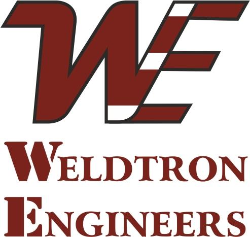Welding Process
Resistance Welding Process:
Resistance welding is a welding technology widely used in manufacturing industry for joining metal sheets and components. The weld is made by conducting a strong current through the metal combination to heat up and finally melt the metals at localized point(s) predetermined by the design of the electrodes and/or the work pieces to be welded. A force is always applied before, during and after the application of current to confine the contact area at the weld interfaces and, in some applications, to forge the work pieces.
Depending on the shape of the work pieces and the form of the electrodes, resistance welding processes can be classified into several variants as described below:
Spot Welding:
Spot welding is a resistance welding process for joining metal sheets by directly applying opposing forces with electrodes with pointed tips. The current and the heat generation are localized by the form of the electrodes. The weld nugget size is usually defined by the electrode tip contact area.
Spot welding is the predominant joining process in automotive industry for assembling the automobile bodies and large components. It is also widely used for manufacturing of furniture and domestic equipment etc.
Projection Welding:
Projection welding is a resistance welding process for joining metal components or sheets with embossments by directly applying opposing forces with electrodes specially designed to fit the shapes of the work pieces.
The current and the heat generation are localized by the shape of the work pieces either with their natural shape or with specially designed projection. Large deformation or collapse will occur in the projection part of the work pieces implying high process/machine dynamics.
Projection welding is widely used in electrical, electronics, automotive and construction industries, and manufacturing of sensors, valves and pumps etc.
Seam Welding:
Seam welding is a resistance welding process for joining metal sheets in continuous, often leak tight, seam joints by directly applying opposing forces with electrodes consisting of rotary wheels. The current and the heat generation are localized by the peripheral shapes of the electrode wheels.
Seam welding is mostly applied in manufacturing of containers, radiators and heat exchangers etc.
Capacitor Discharge Welding Process:
Capacitor Discharge (CD) stud welding is an extremely efficient method of welding fasteners to a wide variety of metals like:
- Mild steel
- Stainless steel
- Aluminum etc..
The process utilizes a powerful bank of capacitors to store energy at a specific voltage determined by stud size and material. When a weld is initiated, this energy is "discharged" through a special "ignition tip" at the base of the stud, creating an instantaneous arc which melts both the base of the stud and the adjoining surface on the work piece. At the same time, the welding gun forces the stud into the work piece, resulting in a permanent bond as the molten material solidifies all in 0.004 seconds
Capacitor Discharge stud welding eliminates drilling, tapping, punching, riveting, gluing, and screwing; and is especially beneficial when working with thin gauge materials due to the absence of reverse-side marring or discoloration.
Capacitor Discharge Stud welding Process:
Capacitor Discharge (CD) stud welding, using very short weld times, permits the welding of small-diameter studs to thin, lightweight materials. The weld cycle can be completed in 0.01 seconds on material as thin as 0.020″ (0.5mm). These fast weld times minimize heat buildup, resulting in welds with very little distortion, discoloration, or burning. Therefore, CD stud welding is often used when appearance is a critical product feature.
CD stud welding uses a capacitor storage system to produce a rapid electrical discharge, stud welding guns, and fasteners. No ferrules or flux are needed. The CD stud welding method, used mainly for welding mild steel, stainless steel, and aluminum studs, includes two primary techniques: Contact and Gap. Both require a specially designed stud with a projection, or ignition tip, on its weld end. This tip provides accurate welding time control with precise repeatability.
Drawn Arc Stud Welding Process:
Drawn Arc Stud Welding, or more simply stud welding, is the process which quickly joins together a base metal, such as steel, to a fastener. This is done via a controlled electric arc process, which melts the end of the fastener to the base metal. There are many types of Fasteners, which are also known as stud welds, including tapped, unthreaded, and threaded.
Short Cycle Stud Welding Process:
Short cycle welding is an abbreviated version of the drawn arc stud welding process. The short cycle welding process involves weld studs which are 3/8″ and smaller and surfaces which are thinner in diameter. With this type of welding, the weld current is higher and the weld time is shorter, thus the “short cycle” name. While this process is similar to drawn arc, it does not use a flux load or ferrule. It also offers the shortest welding times of all the drawn arc stud welding options.
